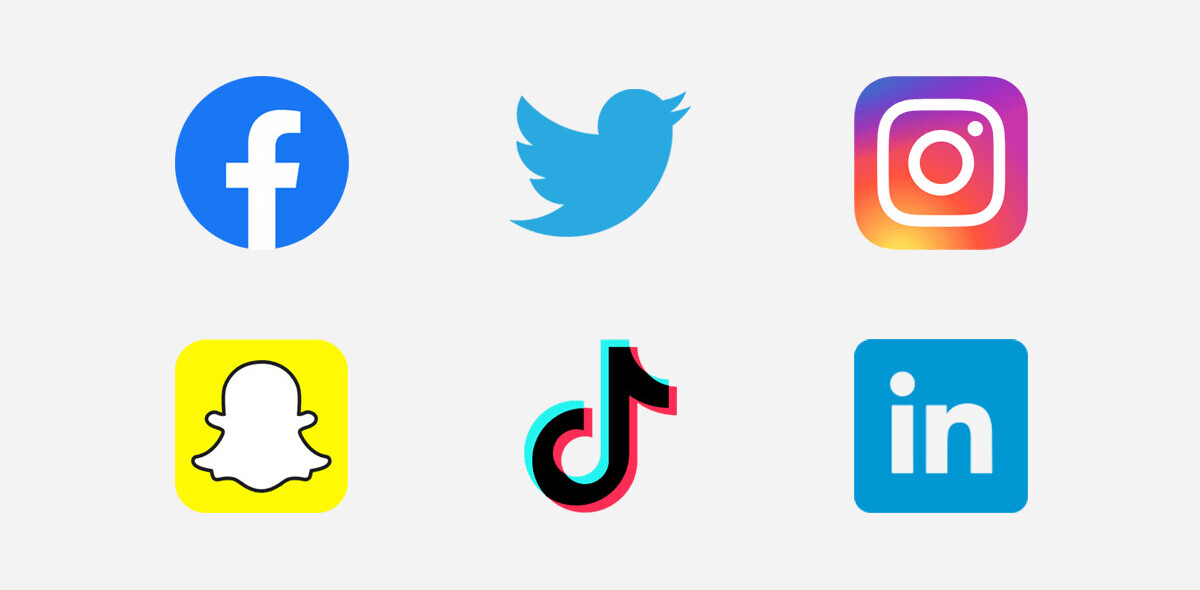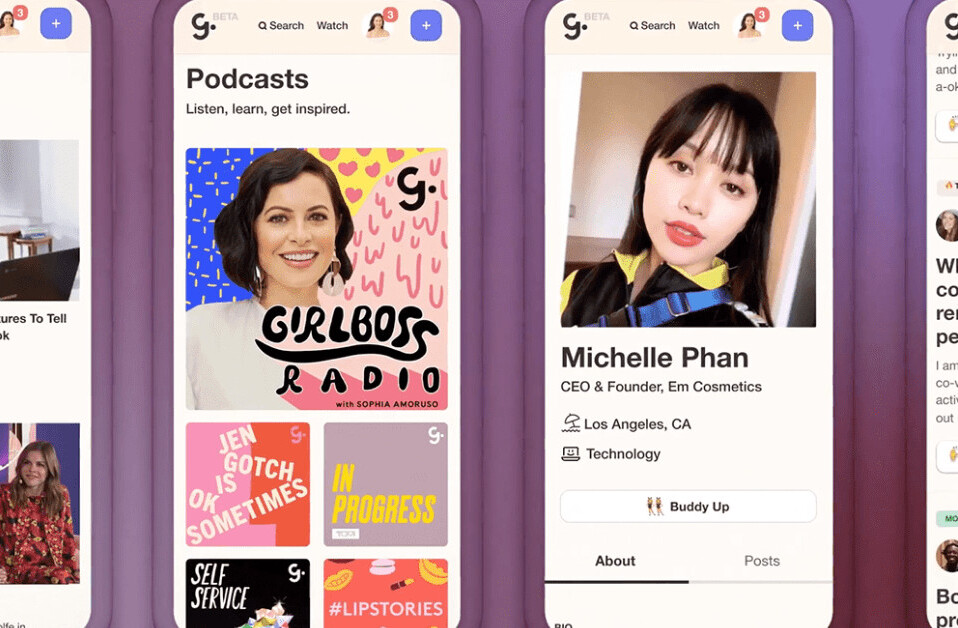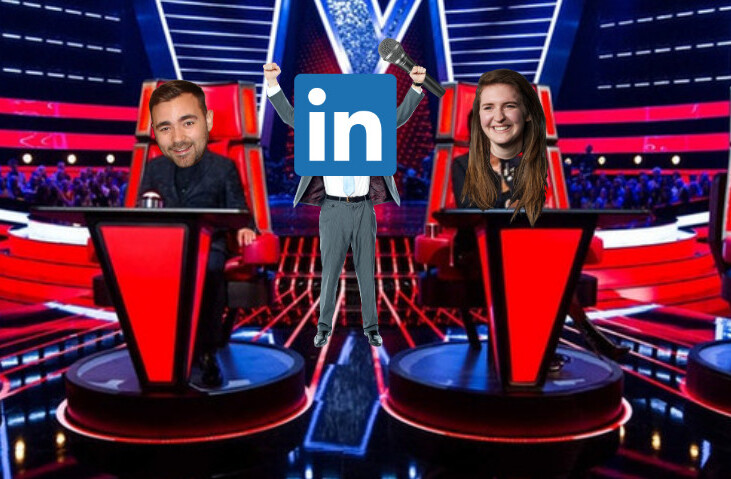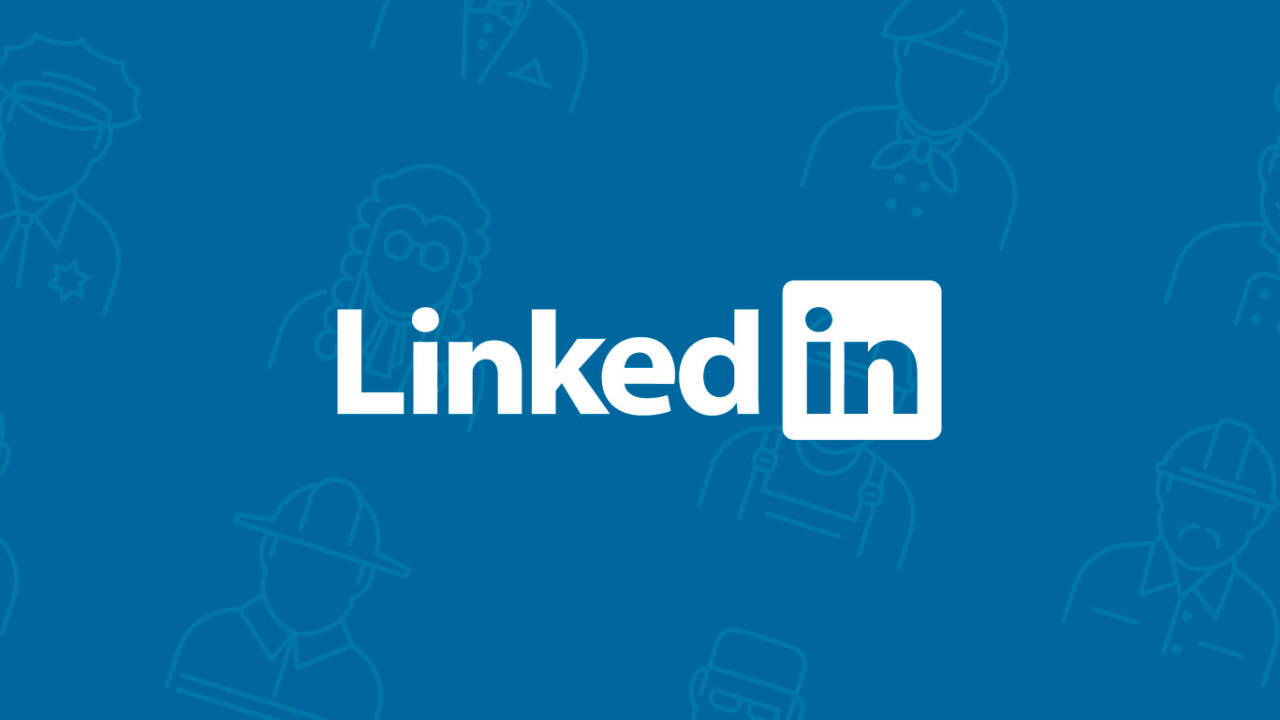
Keeping with my recent theme of refreshing well-received past posts, I’ve decided to provide a follow up for last year’s highly successful post 8 Ways to Better Market Yourself on LinkedIn in 2015.
2015 was a breakout year for LinkedIn, both as a social network and (more importantly) as a content hub and distribution platform.
As of Q3 2015, LinkedIn had over 400 million active users and 37 percent year-over-year growth. Much of this growth is being fueled by LinkedIn’s doubling down on content hosting and distribution.
In an ever-crowded content marketing landscape, finding new avenues to reach consumers and build your audience is a high priority, and LinkedIn represents an underused (yet highly promising) opportunity to drive the quality visibility and engagement you’re looking for.
To help you glean the finer points of the platform I’ve tracked down ten of my favorite LinkedIn experts (and in digital marketing as a whole) and asked them to answer one deceptively simple question:
How can brands better master content marketing on LinkedIn?
Ritika Puri: Leverage LinkedIn as a distribution platform
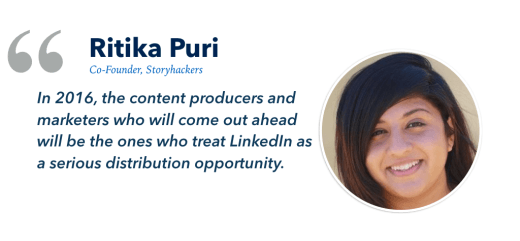
Ritika Puri is a content strategist and co-founder of Storyhackers. Her recommendation not only highlights some interesting, often overlooked LinkedIn features, but also shows how they can be used to strengthen your networking connections.
According to Ritika,
Over the last few years, marketers have found it harder and harder to drive web traffic to their content. In 2016, the task of reaching (and converting) new audience will be – you guessed it – even more challenging.
The remedy to the ever-increasing difficulty of grabbing people’s attention is “up-and-coming distribution hubs and content ecosystems.”
LinkedIn, is exactly the kind of platform that suits the evolving needs of content marketers and the increasing diffusion of consumer attention. Not only is LinkedIn home to a highly qualified and sophisticated audience, but it presents “lots of opportunities to connect, engage, and re-engage with audiences based on [your audience’s] interests.”
This post will highlight many of these unique opportunities, but Ritika’s answer is very important because it calls attention to the fact that these opportunities exist in the first place.
Pam Moore: Test often, automate and optimize

Pam Moore is the founder, CEO of Marketing Nutz, a Social Media, Digital Marketing, Experiential Branding Agency. Her answer is a great springboard off of Ritika’s, because once you realize that LinkedIn as a platform has potential, then the next step is to maximize that potential.
Pam points out that the central concern for marketers using any platform is to “understand their audience and their needs.” The next step for LinkedIn marketers then is to “understand how their audience is using LinkedIn.”
Once that is done, the final step is to “develop a strategy and plan that aligns to the needs of the audience and utilizes the LinkedIn features that will help them reach, inspire, engage and activate their audience.”
There are so many offerings from LinkedIn, as well as from third parties, that can help you truly match the needs of your audience and engage them directly. Pam urges marketers not to “be afraid to test out new features, schedule content at optimum times via automation tools such as Buffer and publish content on personal profiles as well as brand and showcase pages.”
Rebekah Radice: Be dynamic and consistent
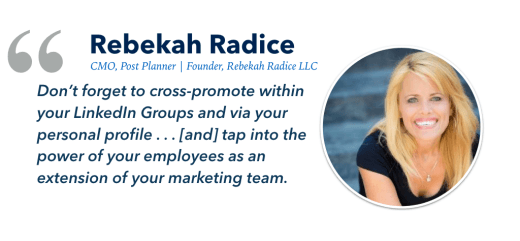
Rebekah Radice is currently the CMO of Post Planner and has an incredible track-record as an independent consultant for social and content strategy as well.
Her advice centers around identifying the core high-level approach that brands should take when they are attempting to establish a presence on LinkedIn.
Simply put “viewing LinkedIn as a static site to house yet another company profile is a mistake.” Rebekah notes just how common this problem is and then offers advice on how to fix the issue.
Whether it’s networking, recruiting or schmoozing that brings you to LinkedIn, content is the connector that will create those opportunities for you.
The core of LinkedIn’s new direction is their rapidly expanding Pulse publishing platform. Rebekah urges marketers to treat this new avenue for content delivery very seriously.
“Stay top of mind by consistently sharing relevant content to your LinkedIn page and taking advantage of expanded reach through LinkedIn Pulse. And don’t forget to cross-promote within your LinkedIn Groups and via your personal profile.”
Aaron Lee: Learn from the best on LinkedIn
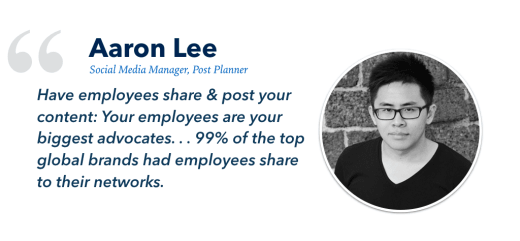
Aaron Lee holds the colorfun title of “Grand Master of Customer Delight” at Post Planner and also self-publishes a social insights on his excellent blog AskAaronLee.com.
His advice can best be summarized by one of my favorite Pablo Picasso quotes “good artists imitate, great artists steal.”
Aaron points to a recent report published by LinkedIn profiling the ten most successful brands on the platform.
Aaron’s advice is to take the lead from the biggest brands and then usefully extract two core insights.
Tip 1: Have employees share and post your content: Your employees are your biggest advocates. Get them to help your brand in your content marketing efforts on Linkedin. 99 percent of the top global brands had employees share to their networks.
Tip 2: Update your company page regularly: According to Linkedin, 99 percent of top brands post an average of 12.6 updates per week on their Company Page.
Can’t get more actionable and straightforward than that.
Sabel Harris: Leverage employee connections
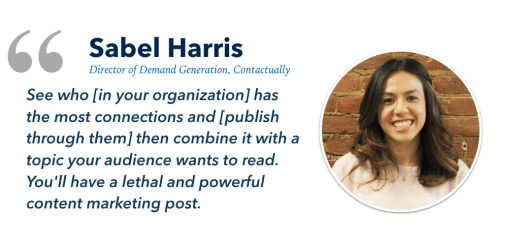
Sabel Harris is currently the Director of Demand Generation at Contactually and has previously worked at several big digital players such as TrackMaven and General Assembly.
Sabel’s advice directs our attention to an incredibly unrealized avenue for LinkedIn influence – your employees and coworkers.
After all, LinkedIn is nothing but a network of professionals, and particularly well-connected individuals within your organization can help maximize the profile of your organization as a whole.
One of the great things about LinkedIn now is that anyone can publish on it’s platform and you can use this to your advantage.
This aspect of LinkedIn enables companies to leverage the connections of individual employees and open themselves up to entirely new audiences.
If you already have a strong sense of what your audience wants then “See who has the most connections and then combine it with a topic your audience wants to read.” If you do this, “you’ll have a lethal and powerful content marketing post.”
Anita Newton: Focus on quality content
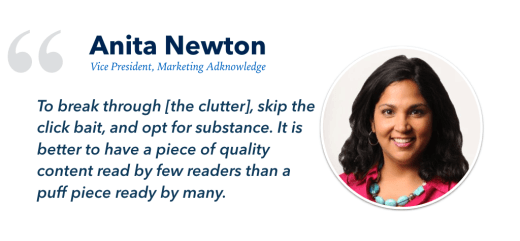
Anita Newton is the VP of Marketing at one of the leading digital advertising companies in video and social, Adknowledge. She has worked in the sales and marketing industries for 20 years and has had an illustrious career to say the least.
Anita gets right to the point in diagnosing the key challenge marketers will face on LinkedIn in 2016. Namely, that as more marketers flock to the platform, it will become more and more “cluttered with every kind of content imaginable – good, bad (and yes) the ugly.”
To get noticed and stay top of mind she admonishes brands to “skip the click bait, and opt for substance.” She importantly reminds us that “it is better to have a piece of quality content read by few readers than a puff piece ready by many.”
The next logical question is how to self-evaluate your own content, to see if it’s truly worth pursuing. She provides a three-step checklist:
1) Will this make my members of my network smarter?
2) Is this a positive reflection of my personal brand?
3) Would I be proud to have my (boss, mentor, recruiter) read this article?
If after performing this exercise you honestly “answered ‘yes’ to all three questions post and publish!”
(Disclosure: Adknowledge is a Honigman Media client.)
Dave Kerpen: Embrace long-form publishing
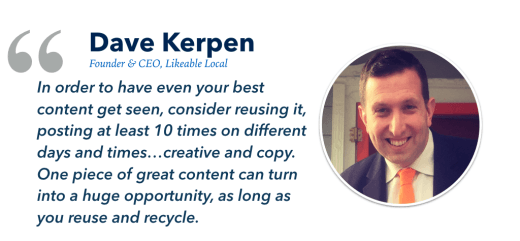
Dave Kerpen is a stalwart within the world of digital marketing and is the founder and CEO of Likeable Local.
Dave’s advice is something that I have publicly espoused on this blog many times – repurposing content is key.
Since there is so much content out there, and so much of it goes unnoticed, brands can’t expect to post a piece of content once just “hoping it’ll go viral.”
In 2016, brands can better master content marketing on LinkedIn by realizing that, just like on Facebook and Twitter, most content on LinkedIn goes unnoticed. In order to have even your best content get seen, consider reusing it, posting at least 10 times on different days and times and with different creative and copy.
Beyond persistent and tailored promotional strategy, Dave also urges brands to recycle content by repurposing it into various forms of content. For example “turning a blog post into a webinar into an ebook, for example.”
The beauty of doing this is highlighted perfectly in the last line of his answer: “One piece of great content can turn into a huge opportunity, as long as you reuse and recycle.”
Peg Fitzpatrick: Get visual with your content
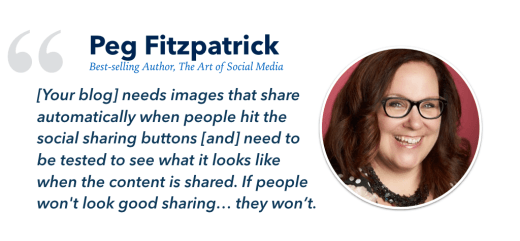
Peg Fitzpatrick has an outsized reputation as a social media consultant and has most recently generated a ton of positive attention after co-authoring the book The Art of Social Media with the famed Guy Kawasaki.
In much the same way that Dave Kerpen’s comments mirrored previous posts of mine, Peg Fitzpatrick’s answer also serves to reinforce an idea I have championed passionately on this site. This idea is that in order for content to reach it’s maximum potential, it must be accompanied by strong visuals.
Peg notes something that should be common sense to most marketers, but is clearly not the case for many:
Blog articles need to be tested to see what it looks like when the content is shared.
I find this to be a particularly insightful comment in regards to LinkedIn, where many people are not constructing the content natively for sharing and many company updates have images that are formatted strangely or incorrectly.
LinkedIn is a professional platform, but even professionals are going to be swayed by quality visuals if they are accompanied by substantive content.
Peg’s answer serves to remind content marketers (on any platform) that “if people won’t look good sharing your content to their audience, they won’t share it.”
Dennis Shiao: Promote aggressively, listen intently
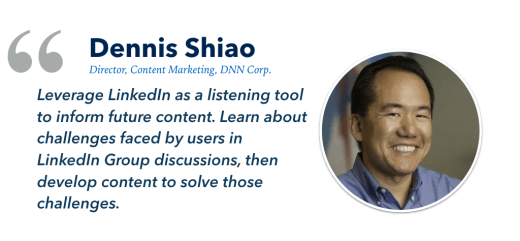
Dennis Shiao is the Director of Content Marketing at DNN and a contributor author to the book 42 Rules of Product Marketing.
Dennis gives a two-pronged recommendation and each half of his answer is equally important.
First of all, brands need to promote their content on LinkedIn and promote aggressively.
“The impact of content marketing can fall short without adequate promotion,” so make sure you leverage all of LinkedIn’s tools for promotion; such as “Company Updates, Sponsored Updates, LinkedIn Groups and LinkedIn Elevate (an employee advocacy product the company launched in 2015).”
The second half of Dennis’ recommendation is to use LinkedIn to explore what types of content and subjects your audience might be interested in. “Learn about challenges faced by users in LinkedIn Group discussions, then develop content to solve those challenges. Review popular posts on LinkedIn Pulse to understand what topics are trending, then create content related to those topics.”
These are just a few ideas, but the most important thing to takeaway is the high-level potential LinkedIn has for both bolstering your existing content and informing your future content.
(Disclosure: DNN Corp. is a Honigman Media client.)
Jason Miller: Leverage direct-sponsored content

Jason Miller is the Head of Global Content Marketing for LinkedIn, which lends a whole degree of weight to his advice, and he certainly doesn’t disappoint.
The first thing Jason points out is that focusing on creating content is meaningless if you are not constantly optimizing that content for maximum reach.
One often overlooked LinkedIn product that can help marketers do this is LinkedIn Direct Sponsored Content. This tool allows “marketers [to] A/B test creative and copy, personalize content in the feed, and control what content you publish on your company page.”
Jason and his team used DSC to promote their The Sophisticated Marketer’s Guide to LinkedIn eBook “to personalize the message and target different job functions.” His team was able to “tweak the copy and creative to speak to the C-suites, Marketing Directors and Practitioners in their own language.”
The use of the tool helped to create broad appeal for this top-of-funnel piece of content since it could be suited to a variety of personas active on LinkedIn.
With so many features, and so much forward momentum, LinkedIn is no longer just a professional social network – it is a content-creation and distribution platform that should be top-of-mind for your content strategy come the new year.
I hope this article has inspired you to take a renewed look at LinkedIn and given you many ideas on how to go about leveraging this highly promising platform.
Get the TNW newsletter
Get the most important tech news in your inbox each week.
